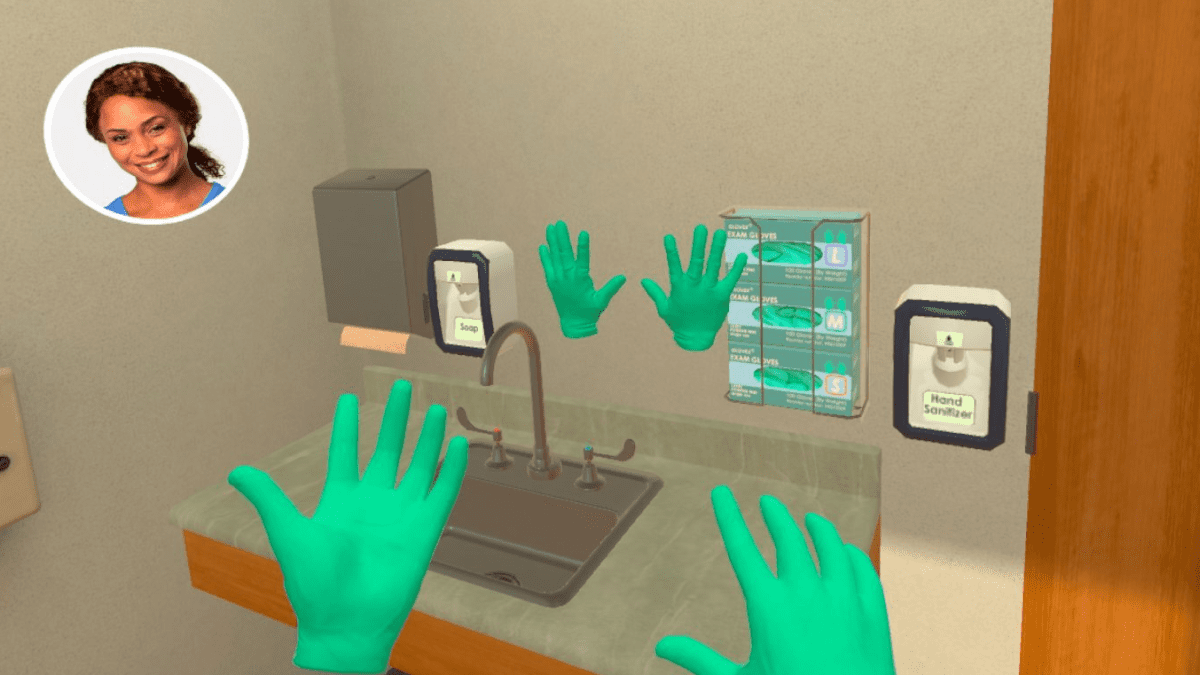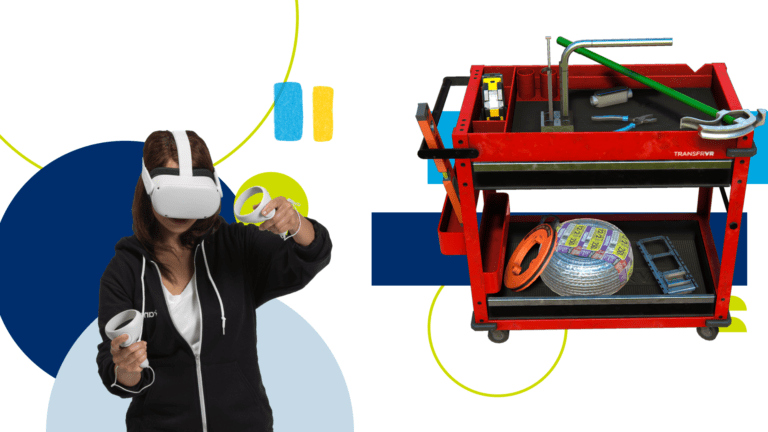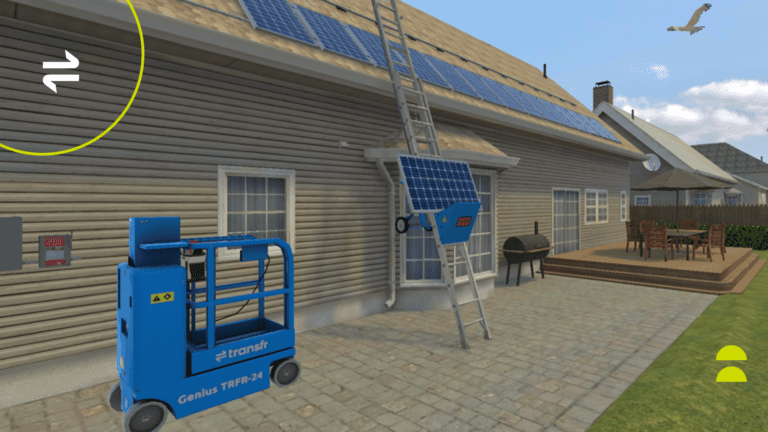The healthcare industry is in crisis: Healthcare professionals are overworked, nearing retirement and leaving the profession. In 2022, 41% of doctors and 49% of nurses reported burnout and 34% of nurses planned to leave their jobs by the end of the year. Healthcare facilities are having trouble filling open roles. Challenges in recruiting and training the next generation of professionals in the coming years point to a looming, sustained crisis of care in the decades to come.
Solving this complex problem will require human ingenuity and technological innovation. For a recent episode of Upward, the Transfr podcast, we sat down with Transfr’s own Lori Hardie, Registered Nurse and Director of Health Sciences, and Syndey Beaumont, Manager of Experience Design, as well as Nursing Director Lori Yates-Hodges, and Registered Nurse Sydney Denstorff to dig into the facts on the ground and talk about how VR training can help!
Hear this amazing panel talk about healthcare challenges and possibilities here!
The scope of the challenge: Healthcare workers burning out and retiring
Working in healthcare is challenging and the COVID pandemic has only exacerbated existing issues in the industry. Professionals are burning out and retiring at an alarming rate, which spells disaster for the U.S.’s aging population. The U.S. Census Bureau reports that by 2034, there will be 77.0 million people aged 65 years and older compared to 76.5 million people under the age of 18.
“There’s a nursing shortage across the country for a variety of reasons,” Lori Yates-Hodges, RN says. “The pandemic led a lot of nurses away from healthcare due to the workload — the inability to have a break in 12 or 14 hours is really hard.”
Strenuous workloads and stressful working conditions have forced numerous healthcare professionals out of the field, or into non-clinical roles. Either way, the bottom line is fewer trained professionals to care for patients and more grueling shifts for those healthcare professionals who stick it out. The present educational infrastructure is insufficient to tackle the challenges of training adequate numbers of healthcare professionals to meet present and future staffing needs.
“There aren’t enough schools. There’s not enough training. There’s not enough equipment to use. There’s not enough simulation labs. There aren’t enough teachers,” Lori Yates-Hodges explains. “People also don’t want to go and work and teach nursing because the pay is almost half of what you can make in the clinical area.”
In addition to training new healthcare professionals, recruiting, hiring, and onboarding is exacerbating the crisis.
“In the last five years, hospitals have turned over one hundred and five percent of their staff,” Lori Hardie says. “Staff nurses are constantly onboarding new hires.”
VR healthcare simulations offer unique benefits in terms of quickly training and onboarding new healthcare professionals.
Overcoming training hurdles with VR healthcare training
Two key factors affecting how quickly schools can effectively train healthcare professionals are clinical site options and trained instructors who can give personalized feedback and direction as students practice key healthcare skills. Lack of clinical sites has a profound effect on the number of new healthcare professionals that can be trained. The American Association of Critical-Care Nurses found that 150 schools (40%) reported that lack of available clinical sites was the primary reason for not accepting all qualified applicants.
VR healthcare training offers unique benefits to address these challenges. Headsets are highly portable and the virtual environment recreates actual healthcare settings, allowing participants to develop familiarity with these workplaces without having to build elaborate simulation centers. A virtual coach gives learners real-time feedback as they safely learn and practice essential skills like donning and doffing personal protective equipment and taking vital signs. Every repetition a student can do in VR is one less time a human instructor has to supervise.
“What VR training provides is asynchronous learning that’s repeatable and facilitates unlimited practice, anywhere.” Sydney Beaumont explains. “That takes the burden off of the already-pressed healthcare labor force. Those nurses can be repurposed elsewhere and people can still be practicing.”
RN Sydney Denstorff had only recently completed her nursing degree prior to appearing on the podcast and had this to say about hands-on training in these programs, and the possibilities presented by VR healthcare training:
“The amount of time that I was actually able to do hands-on activities while in school was somewhat limited. We just had to get it done and move on to the next patient because of time constraints. Practicing in virtual reality would have been great because for me, repetition is huge. There are also those rare scenarios that you’re not going to see in school or an orientation, but you’re going to encounter them at some point.”
VR healthcare training: The future of the healthcare workforce
In an industry as complex as healthcare, there are no quick fixes. However, with current professionals laboring under taxing conditions, leveraging VR healthcare training offers unique benefits to overcoming training challenges, especially around the availability of trained instructors and providing unlimited practice to trainees.
“Because the two biggest pain points are lack of clinical faculty and lack of clinical sites,” Lori Hardie explains. “The alternative is immersive technology where you can actually have hands-on practice that’s remote, scalable, and portable. Obviously, we can’t create more faculty, but what this offers is an additional tool in the toolbox to expand the bandwidth of current healthcare faculty and educators.”
Hear our amazing panel in their own words
on this episode of Upward, the Transfer Podcast.





